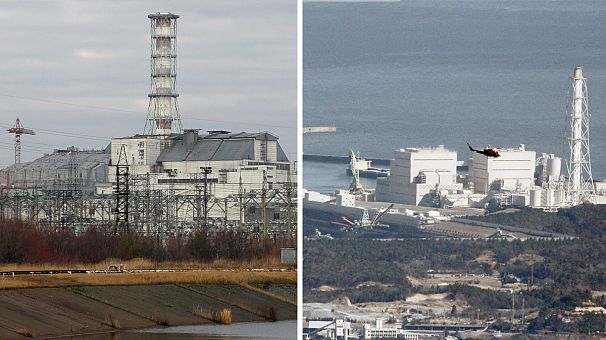
Around 8,000 km and 25 years separate the catastrophic Chernobyl and Fukushima nuclear disasters. There are clear differences between the Ukraine and Japan-based catastrophes, but what are some of the more subtle distinctions? And how were they similar?
Both power stations opened in the 1970s; Fukushima in 1971 and
Chernobyl six years later. The Japanese plant was, then, operating for
40 years before the disaster and the Ukrainian just nine. At the time of
each disaster, six reactors were running at Fukushima and four at
Chernobyl.
Different causes?
At a first glance, the incidents appear to have different causes.
The Chernobyl reactor explosion on April 26, 1986, was the result of an
experiment carried out by plant personnel. The Fukushima meltdown,
meanwhile, was triggered by an earthquake and subsequent tsunami on
March 11, 2011.
However, construction mistakes and negligence have since been cited as being behind both catastrophes.
So, what actually happened?
At Fukushima, the potential dangers of a large tsunami had already
been raised, but ultimately ignored. The March 2011 ‘quake destroyed
power lines and back-up generators, meaning the plant’s reactors could
not be cooled. This caused severe damage, including meltdowns and an
explosion.
Operators at Chernobyl made mistakes during the experiment they were
carrying out and these errors were initially considered to be the main
cause of the catastrophe But the International Atomic Energy Agency (IAEA) later amended its conclusion.
The construction of the RBMK reactor (High
Power Channel-type Reactor) used at the station is deemed one of the
main reasons behind the accident. The reactor’s developers thought that a
certain, disastrous combination of events could not possibly happen at
the same time, so the protective systems to prevent such a situation
were not created. But this chain of events did occur on the night of
April 26; namely the deliberate disabling of the emergency protection
equipment and breaking of operating rules. This resulted in a steam
explosion inside of the reactor, a raging graphite fire and core
meltdown.
Contamination
Both Chernobyl and Fukushima were ranked level seven events on the IAEA’s
international nuclear radiological scale – its highest rating. It was
concluded that both accidents caused a major release of radioactive
material, which adversely affected people’s health and the environment.
But this does not necessarily mean that the Japanese catastrophe was
as dangerous for humanity and the environment as Chernobyl, which
remains the worst nuclear disaster of our era.
Due to its location, the explosion at Chernobyl caused significant
contamination in countries neighbouring Ukraine, such as Belarus and
Russia (all were Soviet republics at that time). It reached the whole of
Europe in some form, except Portugal.
Data: 20.04.2016
Fonte: www.euronews.com



















Nessun commento:
Posta un commento